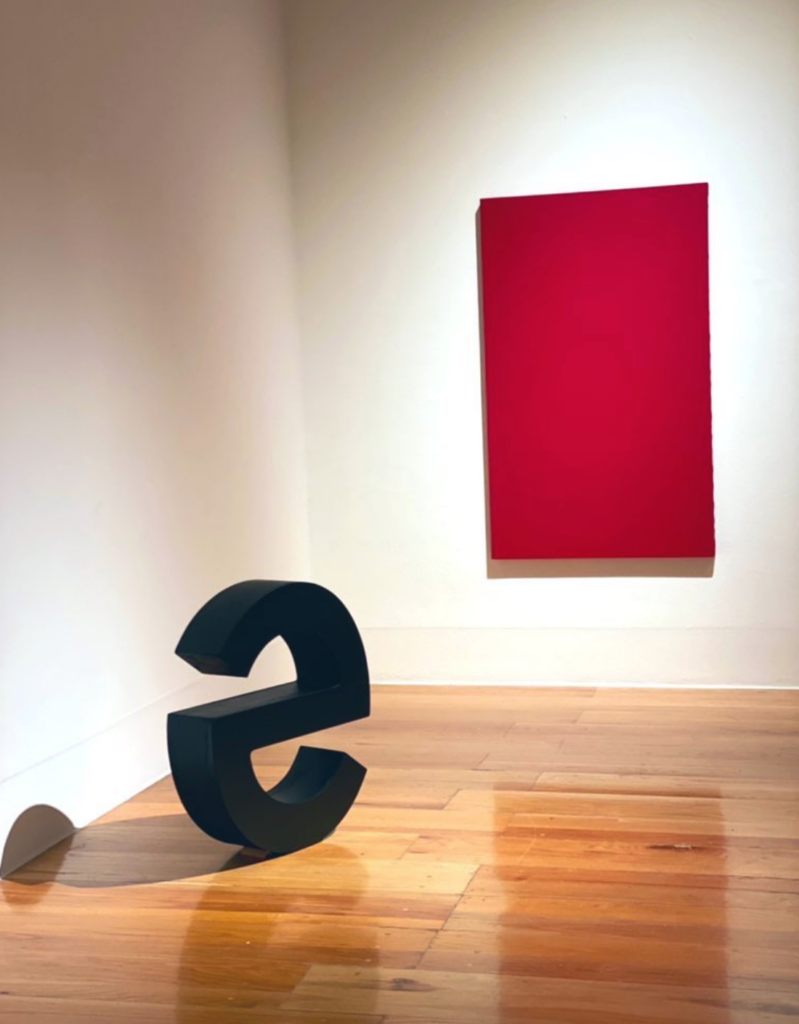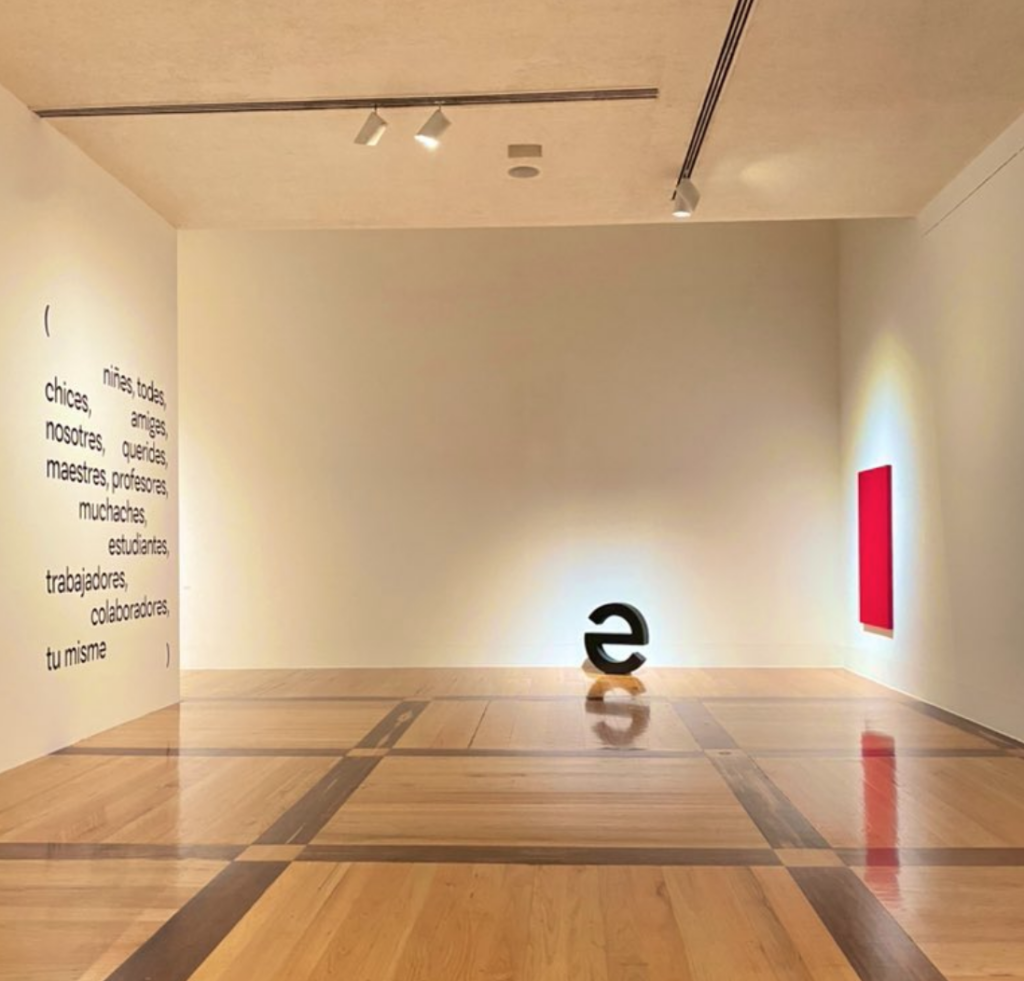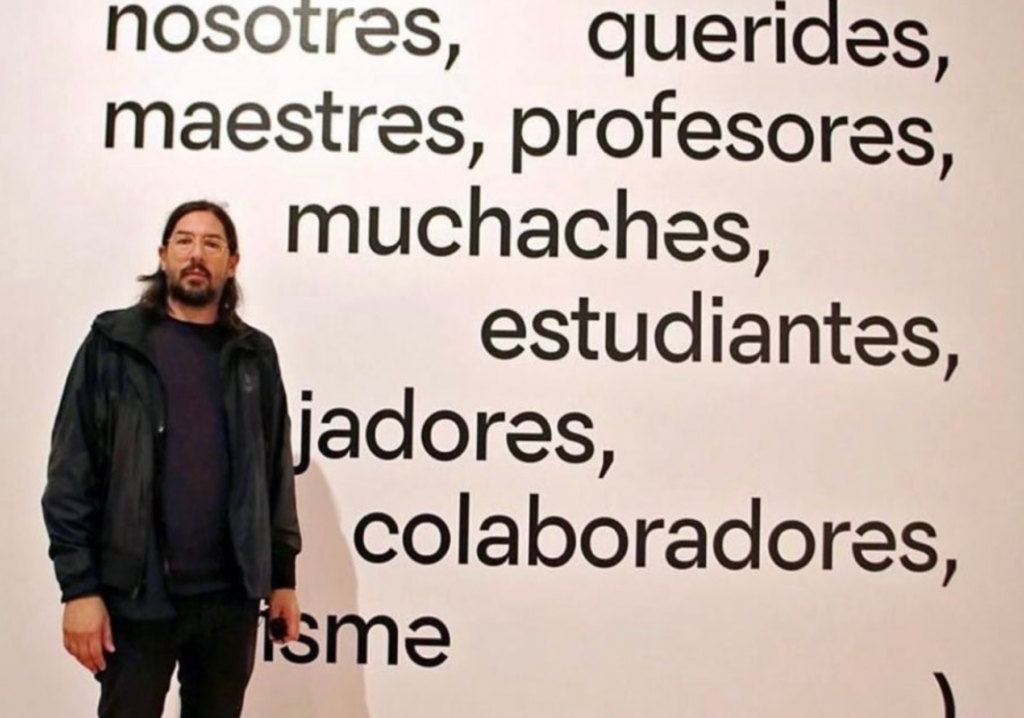
As many of you know in Spanish, unlike English, adjectives, verbs and nouns have gender. Feminine words generally end with the letter “a” and masculine words with “o”.
Faced with this, in the last decade many alternatives have been proposed to replace these vowels and build a more inclusive language. Different proposals from Latin American countries or Spain suggest the “e”, the @, or the “x” as a symbol to replace and neutralize the way in which we express ourselves, without necessarily having the connotation of gender, which is so often unnecessary.
Last year, the Mexican artist Mario García Torres proposed in his last exhibition a proposal that has generated much controversy. He and typographer Aldo Arillo created a new vowel for Spanish as an attempt to solve the dilemma of gender and inclusion in the language. The vowel was created in his “Secte” project, which is part of his exhibition “The Poetics of Return”, the retrospective of García Torres in Marco. Museum of Contemporary Art in Monterrey.
The vowel’s proposal was shown at the museum, where it was launched. There was a sculpture of the letter, a wall with words that exemplify its use and a video. “It’s a letter to try to solve the gender problem. It’s actually a ligature of three letters: a, e, and o. We did it so that it was just a specific sign and that it was a new letter that doesn’t have gender,” García Torres said in an interview. “It’s called ‘sect’ and the idea is that it becomes the sixth vowel of our vowels.”
The letter is a speculative glyph, the artist explained, and is currently only available in the NeuLeon typeface, created by Arillo. “(Hopefully) other fonts eventually begin to add this symbol. It’s not easy,” said the artist of Monclova and one of the Mexican artists with the most projection abroad. With the character, the artist and typographer propose that it can be used instead of e, @ or x, which have been used informally in inclusive language.
Arillo mentions signs like the # that for a while was used only for numbers and is now indispensable in internet culture. Several feminist movements of the 20th century have demanded an inclusive and non-sexist use of language, since in Spanish, masculine pronouns, adjectives and terms predominate. However, specialists and institutions such as the Royal Academy of the Spanish Language have resisted any type of change
“Somehow you had to have a graphic posture, how to solve this in a good way. Language is not something static, it is a living convention, which changes according to need,” said Arillo. “From a graphic and typographical point of view, this sixth vowel proposes a solution, a proposal, something to open a conversation on the subject.” *
For the creation of the vowel, the experts were based on the theory of typography. Arillo explained: “We wanted this sign to have characteristics such as legibility, harmony and rhythm, something that e, @ and x lack in this type of use.
García Torres and Arillo will present the vowel “secte” at the Association Typographique Internationale (ATypI) online congress soon, and at TypeCon, a symposium to be organized from Philadelphia. It is possible to request the letter for its use in the email aldoarillo@gmail.com.
The MAIN QUESTION HERE is: Why would a white, heterosexual and privileged man have to decide how to represent a vowel that alludes to a fight that clearly does not belong to him?
Different groups and collectives, including several feminist groups, have shown indignation and anger at the artist’s proposal. I understand why. I find it interesting to share this, to open the discussion.
* source: https://www.elnorte.com/aplicacioneslibre/preacceso/articulo/default.aspx?__rval=1&urlredirect=/crean-mexicanos-vocal-inclusiva-para-el-espanol/ar2140611

